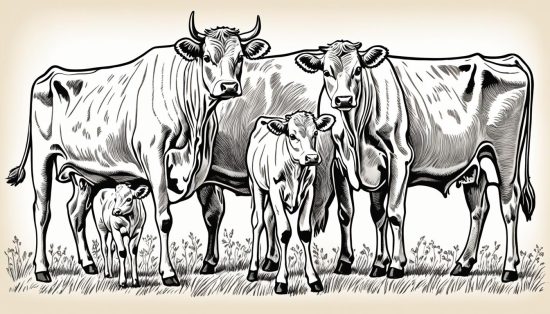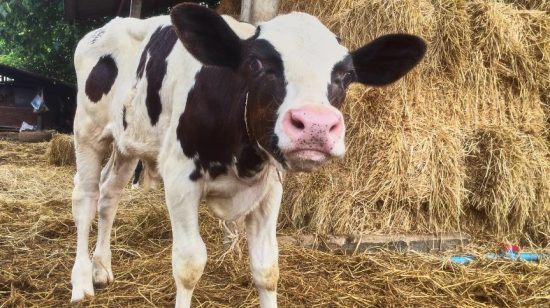How Long Do Ducks Live? Exploring the Lifespan of Ducks
Discover the average lifespan of ducks as pets and in the wild. Learn factors that influence how long ducks live and how to care for them.
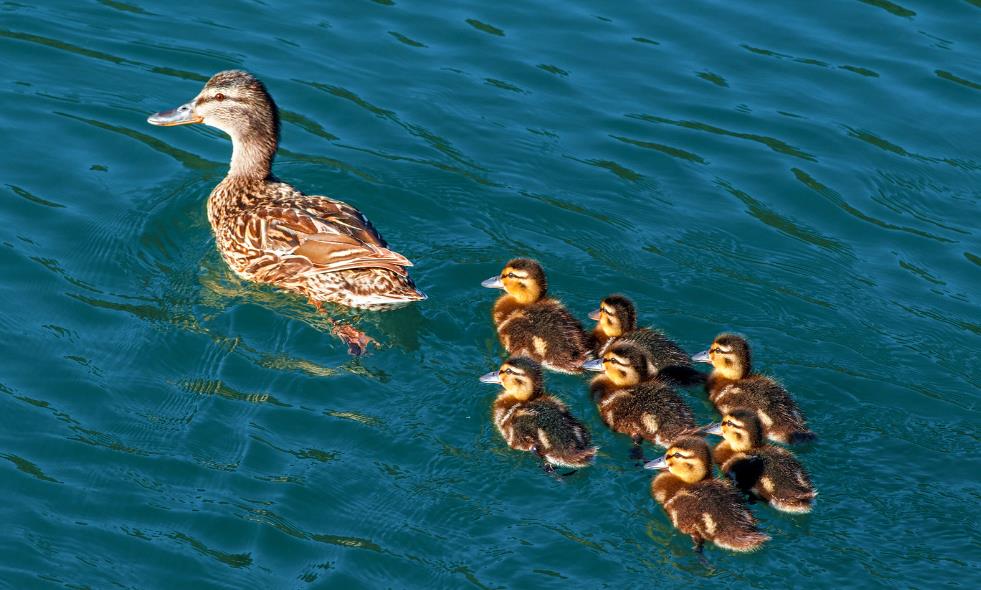
Have you ever wondered how long do ducks live? From their graceful presence in lakes and ponds to their distinctive quacks, ducks are delightful creatures that capture our attention. But have you ever stopped to consider just how long these beautiful birds can live?
In this article, we will delve into the average lifespan of ducks, the factors that influence their longevity, and the differences between wild and domestic ducks. Whether you’re a nature enthusiast, a bird lover, or simply curious, join us on this exploration of the fascinating world of duck lifespan.
So, how long do ducks live on average? What factors determine their lifespan? And how does it differ in the wild versus a domestic environment? Prepare to be amazed as we uncover the secrets behind duck lifespan.
How Long Do Ducks Live?
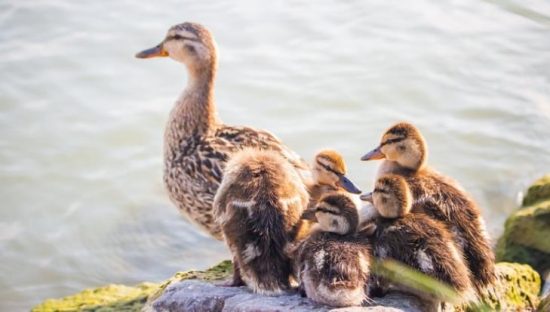
If you’re considering keeping ducks as pets, it’s important to understand their lifespan in a domestic setting. While the lifespan of ducks can vary depending on various factors, such as breed, diet, and overall care, on average, pet ducks can live between 8 to 12 years.
Providing proper care and a suitable environment is crucial for ensuring the longevity and well-being of pet ducks. It’s important to note that ducks are social animals and thrive when they have companionship. Consider keeping at least two ducks to provide them with the social interaction they need.
When it comes to housing, ducks need a secure enclosure that protects them from predators and inclement weather. A suitable enclosure should also have access to water for swimming and should be spacious enough to allow for exercise and natural behavior.
In terms of diet, ducks require a balanced and nutritious diet consisting of a mix of vegetables, grains, and high-quality commercial duck feed. It’s important to avoid feeding ducks with bread or other human foods as it can lead to nutritional deficiencies and health problems.
Regular veterinary care is essential for the health of pet ducks. Find a veterinarian who specializes in avian care to ensure proper medical attention, vaccination, and preventive measures are taken to keep your ducks healthy and disease-free.
Ducks also need a clean and suitable water source for swimming and grooming. Provide fresh and clean water daily, as ducks are prone to water-related diseases if their water is contaminated.
Creating a stimulating and enriching environment for ducks is crucial for their mental and physical well-being. Provide them with toys, hiding spots, and opportunities for foraging to keep them engaged and active.
Understanding Duck Lifespan Variability
The lifespan of ducks can vary significantly due to a variety of factors. Understanding these factors is crucial in determining the longevity of ducks. This section will explore the variability in duck lifespans and the factors that contribute to their lifespan.
One of the main factors affecting duck lifespan is genetics. Different duck breeds may have inherent differences in their lifespan potential. Some breeds are known to live longer than others, influenced by their genetic makeup and breeding history.
Environmental conditions also play a key role in duck lifespan. Ducks living in harsher environments where resources are limited may have a shorter lifespan compared to those in more favorable habitats. Factors like temperature, food availability, and water quality can significantly impact the overall health and lifespan of ducks.
Another crucial factor is predation. Ducks face natural predators in their habitats, and the presence of predators can shorten their lifespan. Predation risk varies depending on the region and the specific predators present. Ducks’ ability to evade and defend against predators can shape their lifespan.
Diet quality is also a significant factor in duck lifespan. Proper nutrition is essential for ducks’ health and longevity. A balanced diet rich in nutrients and suitable for their physiological needs contributes to their overall well-being.
Finally, the level of human intervention and care also plays a role in duck lifespan. Domesticated ducks, for example, can have longer lifespans due to the benefits of human care and protection from predators.
| Factors Affecting Duck Lifespan | Examples |
|---|---|
| Genetics | Differences between duck breeds |
| Environmental conditions | Temperature, food availability, water quality |
| Predation risk | Presence of natural predators |
| Diet quality | Balanced and nutritious food supply |
| Human intervention and care | Domestication and protection from predators |
The Life Expectancy of Wild Ducks
Wild ducks, like many other animals, have a finite lifespan that can be influenced by various factors. Understanding the average life expectancy of wild ducks can provide valuable insights into their ecology and behavior, as well as the challenges they face.
Factors Influencing Wild Duck Longevity
Several factors contribute to the overall lifespan of wild ducks. These factors can vary depending on the species, habitat, and environmental conditions. Some of the key factors include:
- Predation: Wild ducks are vulnerable to predation by a wide range of animals, including foxes, raccoons, and birds of prey. The risk of predation can significantly affect their lifespan.
- Availability of Food: The abundance and quality of food sources in their habitat play a crucial role in the health and survival of wild ducks. A nutritious diet contributes to their overall well-being and longevity.
- Disease and Parasites: Wild ducks can be susceptible to various diseases and parasites, which can impact their lifespan. These health challenges can be influenced by the environment and interactions with other species.
- Environmental Conditions: Factors such as climate, weather patterns, and habitat quality can have a significant impact on the lifespan of wild ducks. Extreme weather events, loss of habitat, and pollution can all pose challenges to their survival.
Life Challenges for Wild Ducklings

The early stages of life can be particularly challenging for wild ducklings. They face unique obstacles that can affect their survival and, consequently, their overall lifespan. Some of these challenges include:
- Predation: Ducklings are highly vulnerable to predation from various animals, such as larger birds, fish, and mammals. Their small size and limited mobility make them easy targets for predators.
- Environmental Hazards: Harsh weather conditions, fluctuating water levels, and unsuitable nesting sites can pose significant risks to the survival of wild ducklings. These environmental hazards can result in high mortality rates.
- Competition for Resources: As they grow, ducklings must compete with other individuals for limited food resources and safe nesting areas. This competition can influence their ability to thrive and survive to adulthood.
| Factors Influencing Lifespan of Wild Ducks | Life Challenges for Wild Ducklings |
|---|---|
| Predation | Predation |
| Availability of Food | Environmental Hazards |
| Disease and Parasites | Competition for Resources |
| Environmental Conditions |
How Domestication Extends a Duck’s Life?
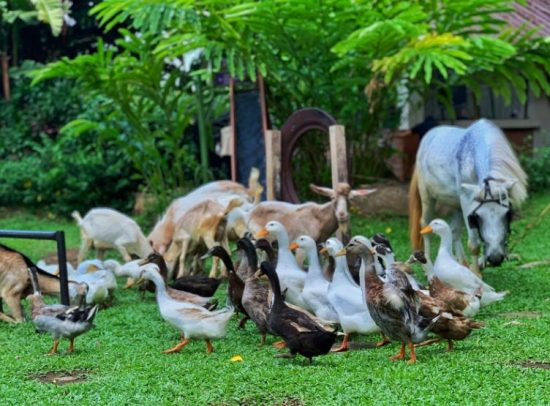
Domesticated ducks enjoy an extended lifespan compared to their wild counterparts, thanks to the numerous benefits that come with human care and protection. In a domestic environment, ducks receive the necessary attention, nutrition, and medical care, which significantly contribute to their overall well-being and longevity.
Unlike wild ducks, who must fend for themselves in search of food, domesticated ducks are provided with a consistent and nutritious diet tailored to their specific needs. This ensures they receive the essential nutrients required for optimal health and longevity. In addition to regular feeding, domestication provides ducks with a safe and secure environment. The absence of predators or natural threats minimizes the risk of injury or harm, further increasing their chances of living a longer and healthier life.
Moreover, domesticated ducks have access to proper veterinary care, vaccinations, and regular health check-ups, which help prevent and treat any potential illnesses or diseases. Regular monitoring of their well-being ensures that any health issues are addressed promptly, enhancing their chances of living a longer and fulfilling life.
The domestication of ducks also offers them protection from environmental challenges such as extreme weather conditions and habitat loss. With a sheltered and controlled environment, ducks can avoid the harsh realities of the wild and thrive in a more stable and predictable setting.
Natural Predators: A Major Threat to Ducks’ Survival
Natural predators are a significant threat to the survival of ducks in the wild. These predators play a crucial role in shaping duck populations and influencing their behavior and defensive strategies in response to these threats. Understanding the common predators of ducks and the defense mechanisms ducks employ is essential in comprehending the challenges they face and their strategies for survival.
Common Predators of Ducks in the Wild
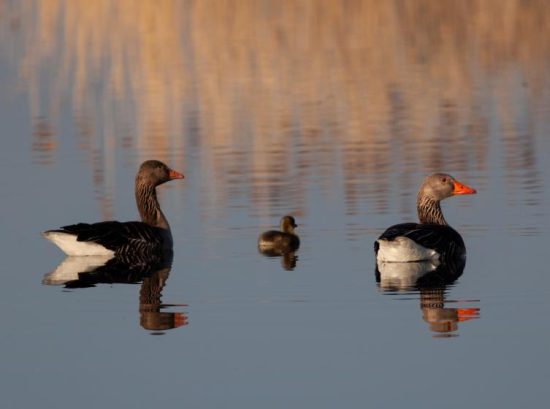
Ducks face a variety of predators in their natural habitats. Some of the most common predators include:
- Foxes: Foxes are known to hunt and prey on ducks, particularly their ducklings. They are quick and agile, making them difficult for ducks to escape.
- Raccoons: Raccoons are omnivorous mammals that often target ducks and their eggs. Their opportunistic nature makes them a significant threat to duck populations.
- Coyotes: Coyotes are predators that are capable of preying on ducks, especially smaller species. They are cunning predators that utilize their pack mentality to outsmart their prey.
- Birds of Prey: Birds of prey, such as eagles, hawks, and owls, pose a significant threat to ducks. These aerial hunters have keen eyesight and strong talons, which they use to catch and immobilize their prey.
Defensive Strategies Ducks Employ Against Predators
Ducks have developed various natural defense mechanisms to protect themselves and their offspring from predators. These defensive strategies include:
- Camouflage: Ducks use their plumage to blend in with their surroundings, making it harder for predators to spot them. The ability to camouflage helps them to stay hidden and evade detection.
- Diving: Ducks are skilled divers, capable of submerging their bodies underwater to avoid predators. By diving beneath the surface, ducks can escape direct attacks and find refuge in the water.
- Fast Takeoff: Ducks have strong wings and can take flight quickly, enabling them to escape from predators in a matter of seconds. Their ability to take off rapidly provides them with an advantage in evading capture.
- Group Defense: Ducks often gather in larger groups, known as flocks, to increase their chances of survival. The more ducks there are, the more difficult it becomes for predators to target and capture an individual duck.
The Role of Diet in a Duck’s Health and Longevity
Diet plays a crucial role in the overall health and longevity of ducks. Providing a nutritious food supply is essential for ensuring their well-being. Just like humans, ducks require a balanced diet to thrive and maintain optimal health throughout their lifespan.
Importance of Nutritious Food Supply
A nutritious food supply is vital for ducks as it provides them with the necessary energy, nutrients, and vitamins they need to grow, develop, and maintain their health. A well-rounded diet is especially important during key life stages, such as breeding, molting, and wintering, when ducks have increased nutritional requirements to support their physiological changes and challenges.
Feeding ducks a diet rich in high-quality, natural foods promotes their overall vitality and supports their immune system, helping them to better withstand environmental stressors and diseases. Additionally, a nutritious diet contributes to the proper development of ducklings, ensuring they reach their growth potential and have a strong foundation for a healthy life.
By providing ducks with a nutritious food supply, you can enhance their fitness and increase their chances of living a long, fulfilling life.
Key Nutrients for Duck Wellness
When considering a duck’s diet, it’s important to understand the key nutrients necessary for their well-being. These nutrients include:
- Protein: Ducks need protein for growth, tissue repair, and egg production. Sources of protein for ducks can include insects, worms, small fish, and plant seeds.
- Fats and Fatty Acids: Ducks require fats and fatty acids for energy, insulation, and the development of healthy feathers. Good sources of fat for ducks include fish, nuts, and seeds.
- Carbohydrates: Carbohydrates provide ducks with the energy they need for daily activities, migration, and thermal regulation. Ducks can obtain carbohydrates from grains, fruits, and vegetation.
- Vitamins and Minerals: Ducks need a variety of vitamins and minerals to support their overall health and well-being. These include vitamin A, vitamin D, calcium, and phosphorus.
It’s important to provide ducks with a diverse and balanced diet that includes a variety of foods to ensure they receive all the necessary nutrients. Duck feed mixes formulated specifically for their nutritional needs are also available and can be an excellent option to provide a complete and balanced diet for pet ducks or ducks in a managed setting.
Duck Breeds and Lifespan Differences

Different duck breeds exhibit variations in their lifespans. Understanding these differences can provide valuable insights into which breeds tend to live longer. Let’s explore the lifespan variations among various duck breeds:
When it comes to duck breeds and their lifespans, there is no one-size-fits-all answer. Factors such as genetics, care, diet, and living conditions can all contribute to the lifespan of a particular breed of duck. However, certain breeds are generally recognized for their longevity. One breed known for its relatively longer lifespan is the Pekin Duck. Pekin Ducks typically live for an average of 10 to 15 years when provided with proper care and a suitable environment. They are popular among backyard duck owners and are raised both for meat and egg production.
The Indian Runner Duck is another breed known for its longevity. These ducks are active and relatively easy to care for, with a lifespan averaging between 8 to 12 years. Their unique upright posture and ability to run rather than waddle make them distinct among other duck breeds.
Other breeds, such as the Muscovy Duck, Swedish Blue, and Rouen Duck, also exhibit varying lifespans. The Muscovy Duck can live up to 15 years or even longer, while the Swedish Blue and Rouen Ducks typically have a lifespan ranging from 6 to 10 years. Each breed has its own unique attributes, ranging from appearance to temperament, which may influence their lifespan.
It’s worth noting that individual factors, such as diet, exercise, healthcare, and protection from predators, play significant roles in determining the lifespan of any duck breed. Providing appropriate care and attention can help ensure that ducks live to their fullest potential.
Reproductive Strategies and Duck Lifespans
Reproductive strategies are a critical determinant of a duck’s lifespan. Different approaches to reproduction can have a significant impact on the overall lifespan of ducks.
Ducks employ various reproductive strategies based on their species and environment. These strategies include monogamy, polygyny, and promiscuity. Each strategy has its advantages and disadvantages in terms of the survival and longevity of the offspring.
Monogamous ducks form long-term pair bonds with a single mating partner. This strategy allows for a more stable family unit, greater parental investment, and enhanced protection for the offspring. Consequently, monogamous ducks can enjoy a longer lifespan due to the increased chances of survival for their young.
Polygynous ducks, on the other hand, mate with multiple females during a breeding season. While this strategy allows for greater genetic diversity and higher reproductive success, it may lead to a reduced investment in individual offspring. This trade-off can result in a lower overall lifespan for polygynous ducks.
Promiscuous ducks engage in multiple sexual partners without forming long-term bonds. This strategy provides opportunities for increased genetic variation, but it also diminishes parental care and reduces the likelihood of ensuring optimal conditions for offspring survival. As a result, promiscuous ducks may have a relatively shorter lifespan compared to other reproductive strategies.
In addition to these primary reproductive strategies, ducks also exhibit a range of behaviors such as brood parasitism and delayed breeding, which further affect their lifespan.
Environmental Challenges and Their Impact on Ducks
Ducks, like many other species, face environmental challenges that have a significant impact on their populations and overall lifespan. Two key environmental factors that directly affect ducks are habitat loss and pollution, as well as weather extremes.
Habitat Loss and Pollution’s Effect on Duck Populations
Habitat loss is a major threat to duck populations. As humans continue to encroach on natural habitats, wetlands and crucial feeding grounds for ducks are disappearing at an alarming rate. This loss of habitat disrupts the availability of food and nesting sites, forcing ducks to migrate or search for alternative habitats.
Pollution further compromises duck populations and their habitats. Chemical pollutants, such as pesticides and heavy metals, contaminate the water and food sources that ducks rely on, leading to adverse effects on their overall health and reproductive capabilities.
Weather Extremes and Their Toll on Duck Lifespan
Weather extremes, including severe storms, prolonged droughts, and extreme temperatures, pose significant challenges to ducks and can impact their overall lifespan.
Extreme weather events disrupt the natural habitats and food sources of ducks, making it difficult for them to find suitable nesting sites or access sufficient food. These challenges directly affect their reproductive capabilities, survival rates, and ultimately, their lifespan.
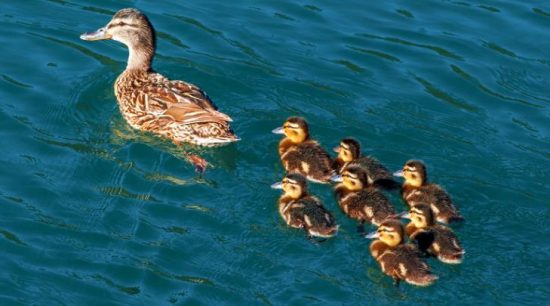
In addition, extreme heat or cold can directly impact the health and well-being of ducks. Extremely high temperatures can lead to heat stress and dehydration, while severe cold can cause hypothermia and limit the availability of food sources.
Understanding the environmental challenges ducks face, such as habitat loss, pollution, and weather extremes, is crucial for conservation efforts and ensuring the long-term survival of these remarkable species.
| Environmental Challenges for Ducks | Impact on Duck Populations |
|---|---|
| Habitat loss | Disruption of nesting sites and food availability |
| Pollution | Adverse effects on overall health and reproductive capabilities |
| Weather extremes | Disruption of natural habitats, food sources, and reproductive capabilities |
FAQs on how long do ducks live
What factors affect the lifespan of ducks?
The lifespan of ducks can be influenced by factors such as genetics, diet, environmental conditions, predators, and reproductive strategies.
What is the average lifespan of wild ducks?
Wild ducks have an average lifespan of around 2 to 5 years in the wild, with some species living longer under favorable conditions.
What challenges do wild ducklings face in their early stages of life?
Wild ducklings face challenges such as predation, competition for resources, and the risk of separation from their mother.
What are the common predators of ducks in the wild?
Ducks in the wild may face threats from predators such as foxes, raccoons, snakes, birds of prey, and larger mammals like coyotes.
How do ducks defend themselves against predators?
Ducks use defensive strategies such as flying away, diving underwater, seeking cover in dense vegetation, and forming large groups for protection.
What is the importance of a nutritious food supply for ducks?
A nutritious food supply is essential for the overall health and longevity of ducks. It provides the necessary energy and nutrients for their growth, reproduction, and immune system function.
What key nutrients are necessary for the well-being of ducks?
Ducks require a balanced diet that includes protein, carbohydrates, fats, vitamins, and minerals. Their diet should consist of a variety of aquatic plants, insects, seeds, and small invertebrates.
Do different duck breeds have different lifespans?
Yes, different duck breeds can have varying lifespans. Some breeds, such as Muscovy ducks, have been known to live up to 20 years or more, while others may have shorter lifespans.
How do reproductive strategies impact the overall lifespan of ducks?
Ducks that invest more energy in reproduction, such as laying more eggs, may have shorter lifespans due to the strain on their bodies. On the other hand, ducks with lower reproductive rates may live longer.
What are some environmental challenges that can impact the lifespan of ducks?
Ducks face environmental challenges such as habitat loss, pollution, and weather extremes, which can affect their food availability, nesting sites, and overall survival.
Are ducks okay being kept alone as pets?
Ducks are social animals and thrive in the company of other ducks. It is recommended to keep ducks in pairs or small groups to provide them with companionship and mental stimulation.
How do different duck breeds vary in their lifespan?
Different duck breeds can have notable differences in their lifespans. For example, Muscovy ducks have longer lifespans than Mallards or Pekins.

